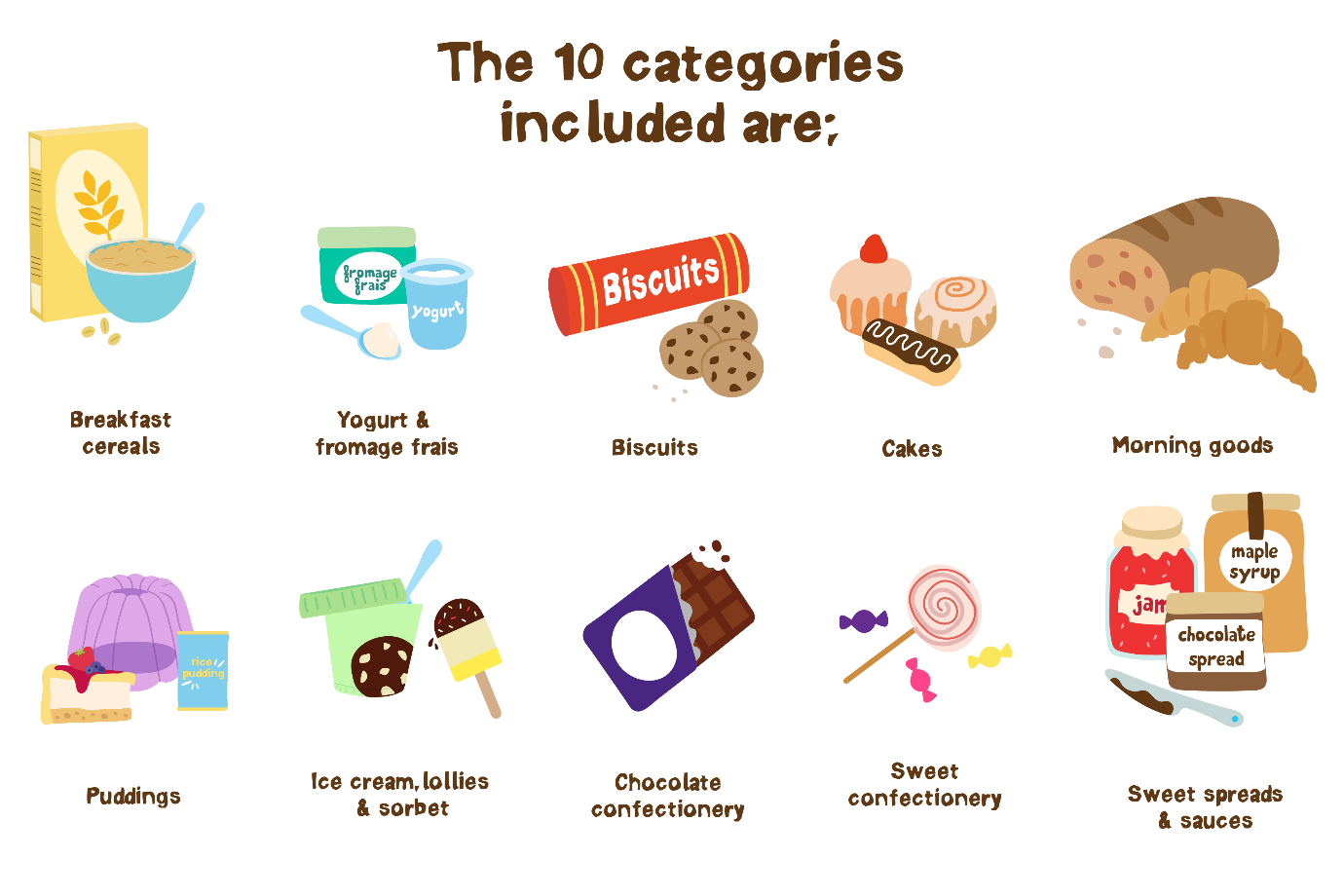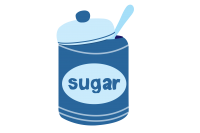With the recent changes in how sugar is defined we looked at the distinction between sugars added to food and drink (commonly referred to as ‘free sugars’ or ‘added sugars’) either by the food industry or by us in the kitchen. We also looked at those which are referred to as ‘naturally occurring sugars’ found within foods such as fruit and milk.
Sugar has been put into the spotlight because data shows we are consuming more than double the maximum recommended allowance of free sugar. It should equal about 5% of our energy intake but currently equates to over 11%.
Free sugar can contribute more calories than we need, and as a result is linked to weight gain; with one in three children being overweight or obese by the time they leave primary school. It’s also not very good for teeth; with around a quarter of 5-year olds have tooth decay. Previously there hasn’t been any regulation on what or how much sugar can be added to food and drink. But now manufacturers are being urged to reduce the amount of sugar added to their products, with particular focus on foods known to be consumed most frequently by children.

Brands have been doing this by;
1) Reformulation (adjusting how the product is made)
2) Reducing portion size of the product being sold
3) Offering lower/ no added sugar products in their range
That’s good news for us, but what else can we do to help our children without getting caught up in all the mixed messages around sugar or being made to feel like the food police? There is guidance in place from Change for life, but I’m not sure this is that helpful unless we are keeping a tally somewhere (which I’m not!).

To feel I’m doing the best I can, whilst keeping realistic, I do a few things:
Remember context
Sugary foods do not have to be removed from the diet as long as they are not displacing all the good stuff. My children both have quite a sweet tooth. My role is therefore to educate them on appropriate portion size for their bodies. Obvious sources of sugar for example biscuits, sweets and ice creams need to be small; one not two biscuits, one scoop not two, small handful not a whole bag etc.
Remember the healthy stuff
I will always for the most part encourage snacks to be of nutritional value. The sweeter stuff goes in either alongside or in addition to the foods which are boosting their fiber, vitamin and mineral intakes.
Don’t get caught up in the ‘sugar free diet’ nonsense
It is impossible and unnecessary to aspire to a sugar free diet. Some sugar is needed in food to act as a preservative or to provide bulk, texture or to trap air in a food for example. It adds taste and helps with visual appeal, both of which are important unless we want to eat cardboard! Interpreting the nutrition label is quite helpful to gauge when there is perhaps too much sugar.
Understand the ingredients list on food and drink labels
Ingredients will be listed in order, starting with the most used ingredient first. At a glance this will tell you whether they’ve added sugar to the product. If sugar is in the top three, then it may form quite a significant addition to the product (depending on the percentage of number one ingredient of course!). For example, some cereals will be over 90% grain with a small percentage as sugar to add taste; understanding how much is too much is therefore key. If no sugar sources are listed in the ingredients list you can be confident any sugar listed on the nutrition label will be naturally occurring.
Use nutrition labelling to inform
Sugar information will be listed as Carbohydrates - ‘of which sugars’ on the nutrition label. To compare products, it’s a good idea to look at the per 100g column. Here if it is less than 5g per 100g it is considered low in sugar. If it is over 15g per 100g it is considered high in sugar. This information might also be listed on the front of the pack and be accompanied by colour coding; red, amber or green. The majority of the time choose green or amber and keep red foods in small portion sizes.
Also consider if the sugar is naturally occurring or an added free sugar (the ingredients list will help with this). Naturally occurring sugars will usually be in products which are a better source of other nutrients, for example fiber or calcium, so it’s really important to put this into context. Fruit for example will show all of the carbohydrate that it contains as ‘sugar’. This doesn’t mean it should be avoided. Far from it, as this sugar is naturally occurring it will also be present with more fiber, vitamins and minerals adding more nutritional goodness to the diet which is far more important.
To see how much actual sugar is in the serving size of the food you are choosing, look at the per serve column. Have a think about how much the serve is likely to be for your child (or you for that matter) because it might not necessarily be the same as what the manufacturer says it is!
The ‘of which sugars’ column will include both naturally occurring sugars (e.g. lactose) and added free sugars (e.g. glucose-fructose syrup) which can make some products a little confusing to decipher, for example, flavoured milk drinks. These will be a natural source of calcium and B vitamins, so not necessarily a bad choice for children, but we need to assess the added free sugar content. As a good rule of thumb around half of the ‘of which sugars’ will be lactose meaning on average a couple of teaspoons of sugar is added. We can then put this into context of what else they’re having that day. As it’s all about balance?



